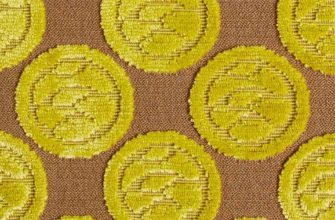Veil is a fabric with a mesh structure, which is made using a plain weave method. Most often, it is made of cotton, but wool and silk fibers can also be used. Synthetic materials based on polyester are also used to produce veils, which makes the fabric more wear-resistant. This material has become popular due to its affordable price and lightweight, aesthetic appearance. Veil curtains are universal and are great for decorating any room. This article discusses recommendations for choosing a veil for different rooms, its features and rules for caring for it.
Tulle fabric
A properly selected veil significantly changes the appearance of the room, adding notes of mystery, completeness and aesthetic perception. Delicate, light and transparent tulle can become the final accent in any interior. Today, stores offer a wide range of colors and types of fabrics. The main supplier of veils is Türkiye.

Characteristics and advantages of the veil
This type of fabric looks elegant and attracts attention. It has several advantages:
- Lightness - such material does not require complex fastening methods, cornices will not tear with it;
- The fabric transmits light well, making the space appear wider;
- The delicate texture of the veil allows you to see what is happening outside the window, while simultaneously hiding the interior of the room from strangers;
- The material does not require complex maintenance;
- All types of tulle do not require ironing;
- Excellent air permeability - there will always be fresh air in the room;
- Tulle with mesh protects against insects from entering the house;
- Large selection of colors, styles and sizes;
- The material is affordable.
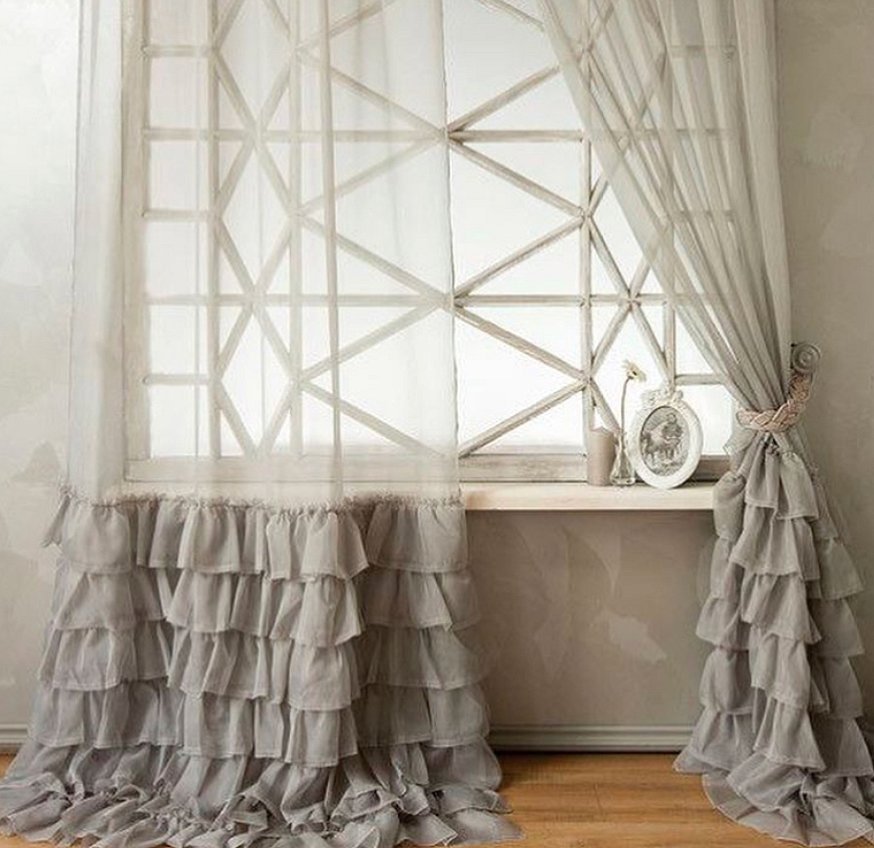
This fabric has no disadvantages, the main thing is to avoid damage, as it is light and can easily tear. It is not recommended to pull or tug the veil too much, and it is also advisable to protect it from animals.
Color and Texture Ideas
Designers advise paying attention to the following recommendations when choosing curtains:
- If you are not sure of your taste or have difficulty choosing a color, you should choose a single-color option. White veil will perfectly match any shade of wallpaper. This choice is always relevant and universal.
- For rooms with monochromatic decoration, fabrics in bright shades should be chosen.
- Place a small curtain on the windows and decorate the windowsill with framed photographs.
- For children's rooms, you can choose a veil with a pattern, but the walls should be painted in neutral tones so as not to overload the child's vision.
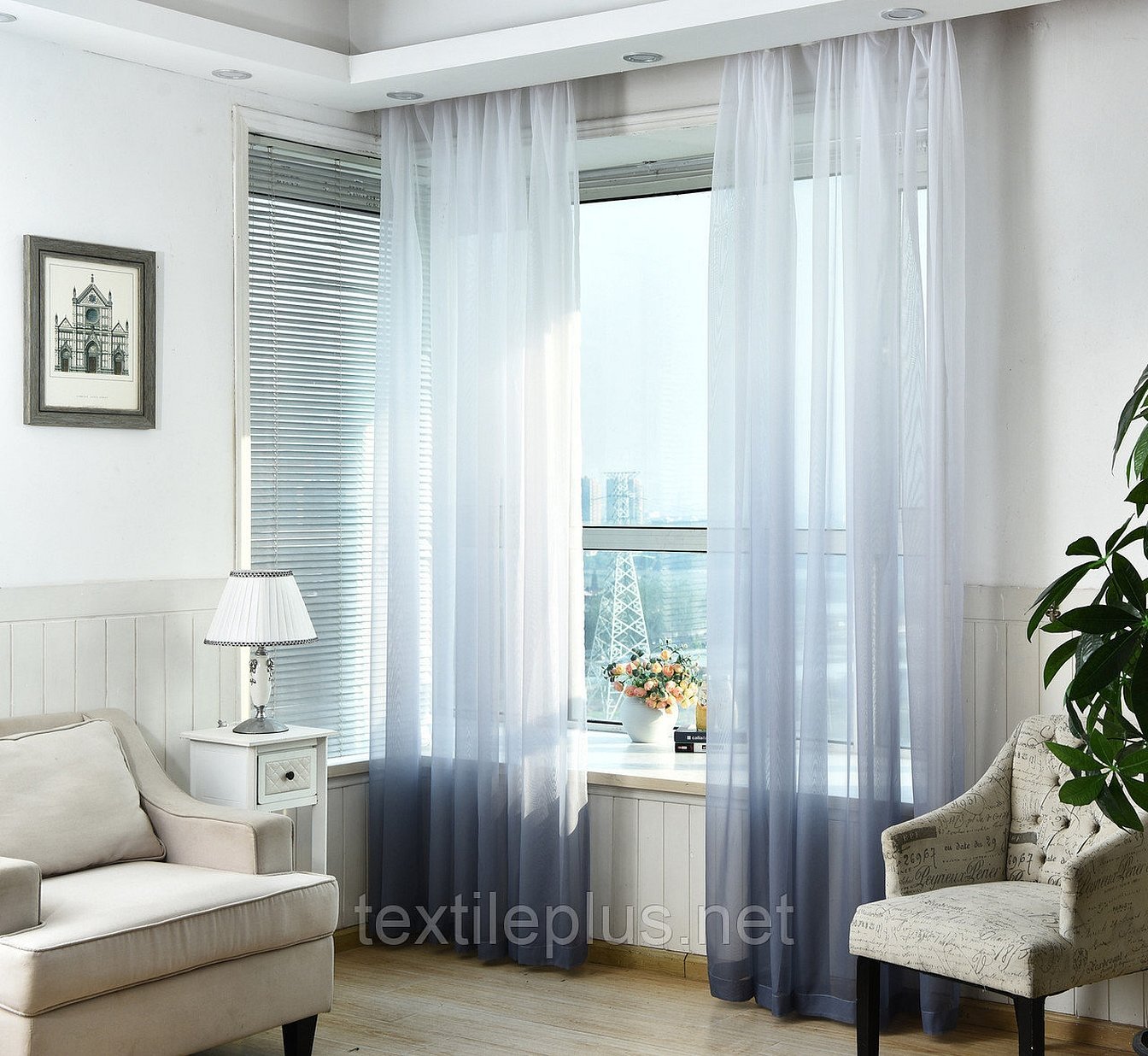
- Tulle-stretching will give the room more light and visually increase the space, especially if the wallpaper has calm shades.
- For rooms with low ceilings, it is recommended to use curtains with vertical stripes.
- Tulle with a velveteen coating will be an excellent addition to upholstered furniture with velveteen or suede upholstery.
- It is also possible to make custom curtains with photo printing.
Dimensions and proportions
To determine the required veil width, you should measure the length of the cornice. This is the key value that you need to focus on in further calculations.
If the tulle is intended for the kitchen, it is better to avoid models that reach the floor and not to create numerous folds.

In the case of a living room, on the contrary, it is preferable for the veil to reach the floor and cover the entire window. To add a festive look to the fabrics, many folds are made. To calculate the width of the veil in this case, the length of the cornice should be multiplied by 2.
Ways to Hang Curtains
There are different options for attaching to the cornice.
Drawstring
This is the most popular method of fastening, which is simple and does not require additional fittings. It is necessary to bend the upper edge of the material and stitch it on a sewing machine. Then the curtain rod is placed in the created hole. The drawstring looks great on light and airy fabrics. In addition, for more correct fixation of curtains, you can use a weight.
Loops
The loops can be sewn onto the tulle or glued on with Velcro. You can also make them yourself, choosing the color of the fabric.
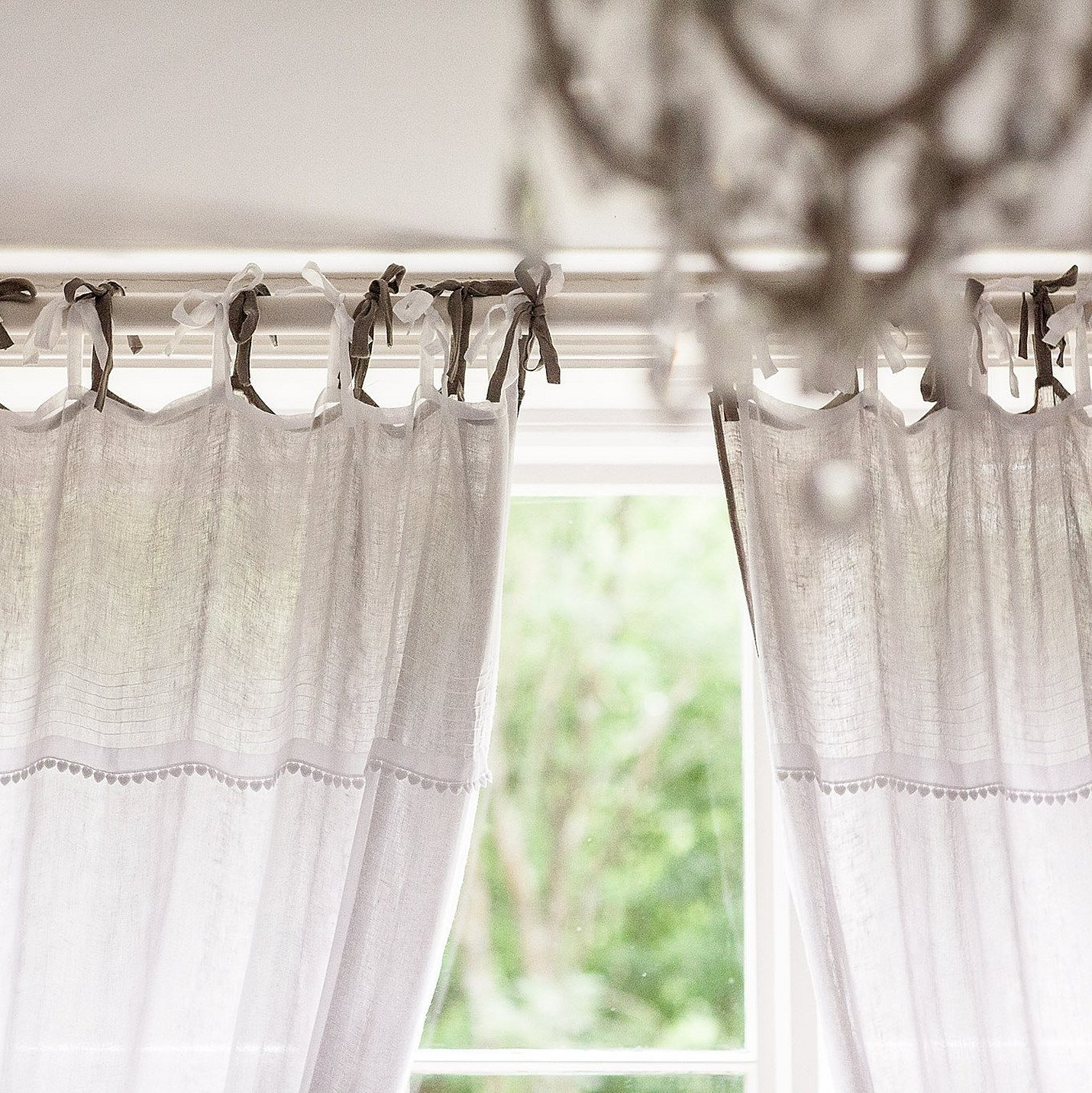
Ties
These fastenings resemble loops. The ties are made of fabric, cords or ribbons.
Rings
Rings are often offered complete with a curtain rod. They are made mainly of metal or wood, less often of plastic. The process of assembling the curtain is very convenient - just string it on the rings.
Eyelets
These fastening elements are sewn into the upper part of the curtain. Eyelets can be metal or plastic, with different diameters. Curtains with this type of fastening are made to order. Using a veil in the interior of a home.
Themes for children
Recommendations for decorating the interior of a child's room.
- Veils are most often purchased for ready-made curtains, so it is important to choose them so that they harmonize with each other. If the curtains are plain, you can choose a veil with a pattern.
- For rooms decorated in soft tones, dark blue tulle is a great choice.
- White color will be a universal option for any child's room.
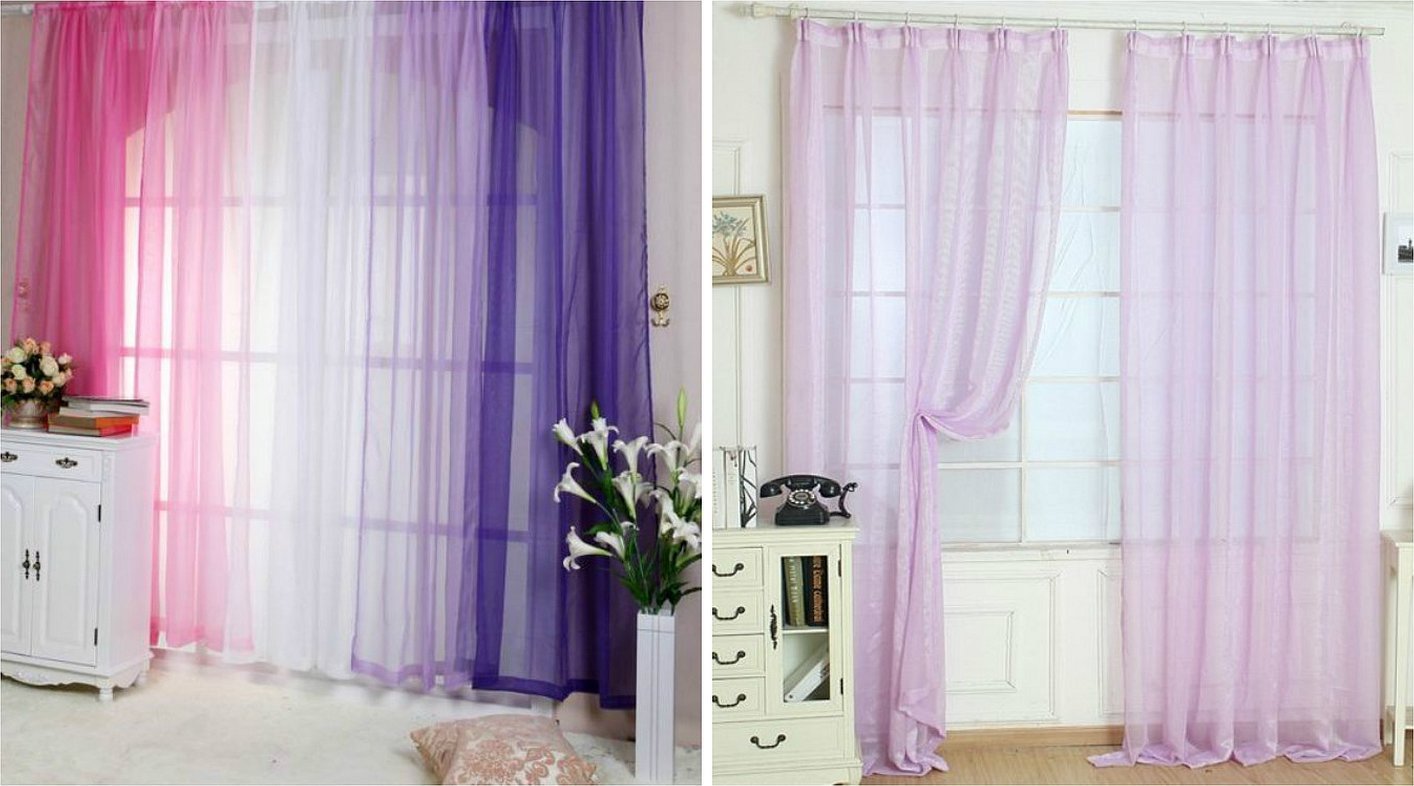
However, it is worth considering different color schemes for boys' and girls' rooms. Pink, purple and coral shades are good for girls. You can also use embroidery for curtains.
For teenage boys, gray, brown, sand or blue tulle is ideal. You can choose the color depending on the furniture in the room to create a complete image. For children, it will be appropriate to choose tulle with images.
Living room
Contrasting color solutions are ideal for decorating a living room: a white veil against black curtains will create an elegant look. Such bold combinations will add brightness to the interior and lift your spirits.
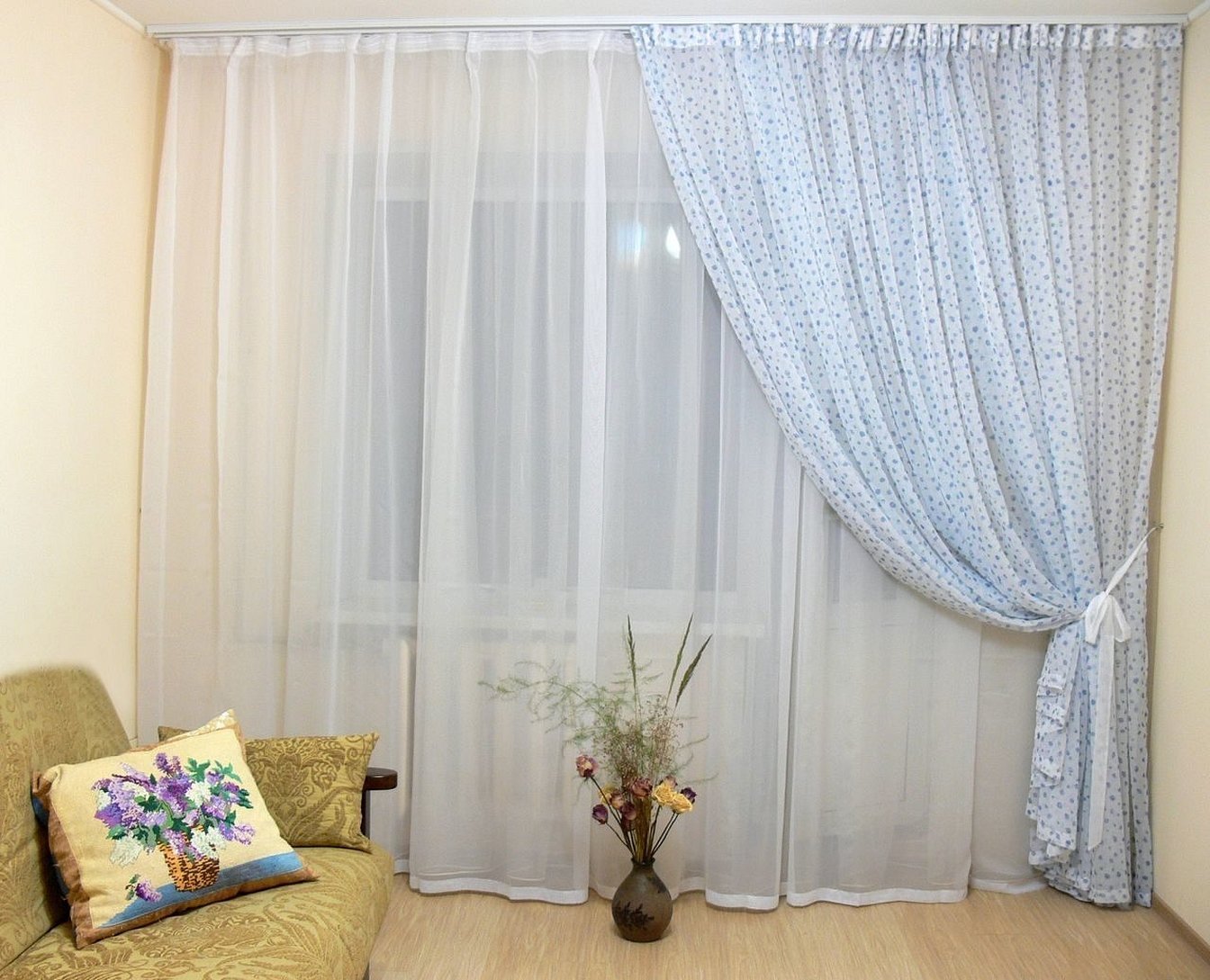
Pastel veils can be complemented with brown shades, which will create a cozy atmosphere in the room.
For light, unobtrusive veil colors, it is worth using shades of the same color range, such as sky blue and red-pink. These neutral colors look great in a monochrome interior without unnecessary decor and patterns.
Please note! In small rooms, it is not recommended to use too many bright colors, as this will visually reduce the space.
Bedroom
In the bedroom, it is important to create a cozy and relaxing atmosphere, as well as to provide a certain level of privacy. Curtains are suitable at night, and tulle during the day. For residents of the first floor, it is recommended to use a thicker fabric for the veil, so that it is thick enough and has enough folds to protect from the views of passers-by.
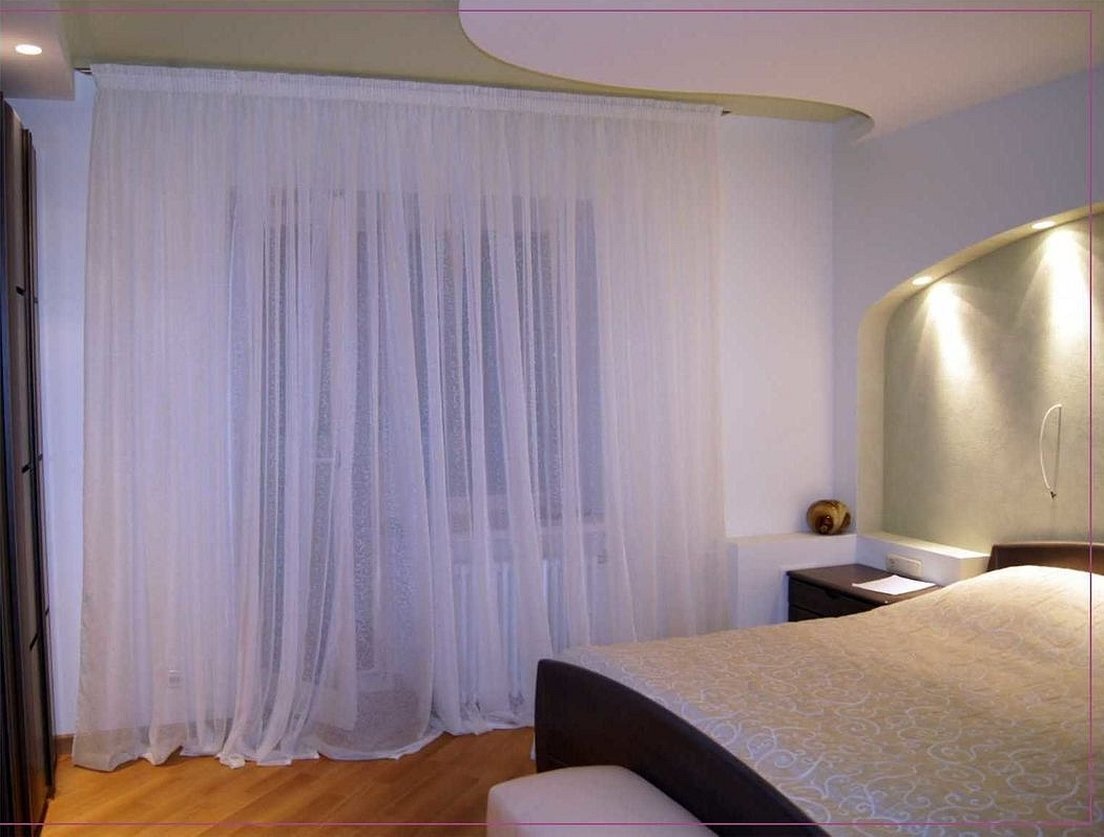
The choice of fabric density depends on the orientation of the windows. For southern and eastern windows, it is better to use thick curtains. If the windows face northern or western sides, it is preferable to choose light fabrics to ensure a greater influx of sunlight.
Kitchen
- the material for the curtains should be thick;
- try not to place tulle near the stove;
- It is necessary to take into account that in the kitchen curtains will get dirty more easily than in other rooms; it is better to choose a tulle length that does not reach the floor, the optimal option would be a length to the middle of the window;
Curtains should not create obstacles in the kitchen.
How to choose the ideal option?
For the living room, it is worth choosing tulle in bright shades with a variety of patterns. In the bedroom, it is better to give preference to calmer tones, such as beige or blue, with a large number of folds.
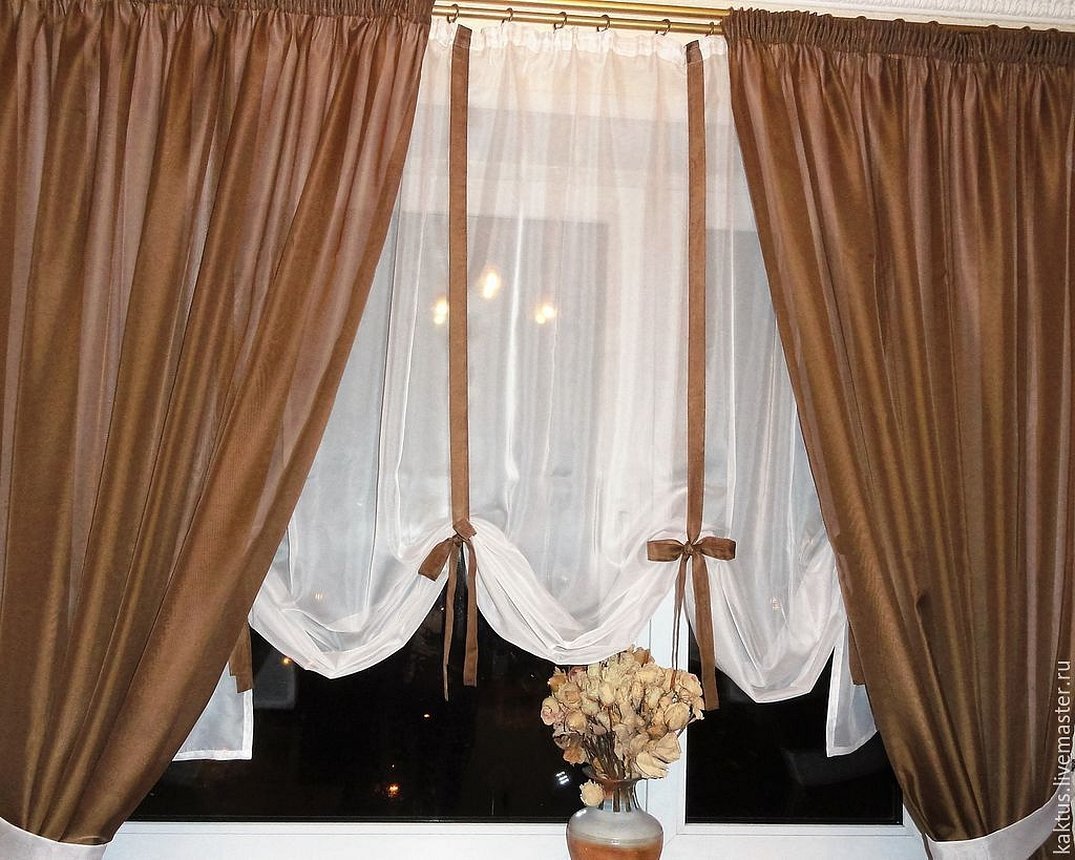
In the kitchen, it is recommended to refuse to use curtains in this part of the room. However, if the choice of fabric is still necessary, preference should be given to synthetic materials. You can use mesh, organza or linen fabrics.
For children's rooms, tulle made from environmentally friendly materials is often chosen, which should retain its shape well, be easy to wash and be wear-resistant.
Veil care
It is recommended to wash by hand or in a machine, but at a temperature not exceeding 40 degrees. Do not wring, as this can stretch the material and spoil its appearance. You should also avoid using aggressive detergents.
If the veil is very dirty, it should be soaked in a cold soapy solution for 2 hours. After washing, the curtains can be hung on the curtain rod and they will dry in this position.
Ironing the veil is allowed, but only through gauze and at a temperature not exceeding 100 degrees. Using a steamer is strictly prohibited.
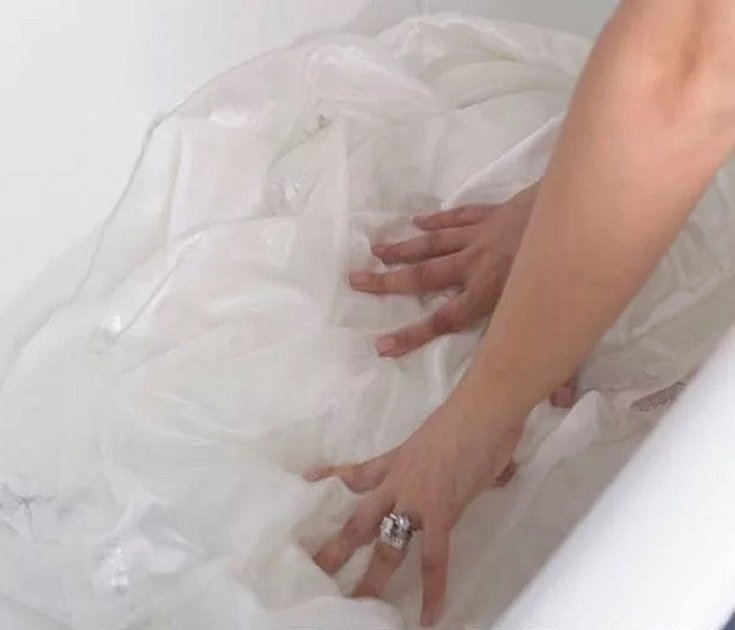
Choosing a veil is not an easy task. The wrong shade or size of fabric can spoil the visual perception of the room, while a properly selected veil will add harmony to the interior. It is important to remember that for children's rooms you should not use too bright colors, and in the living room, on the contrary, bright shades will give a luxurious look.



